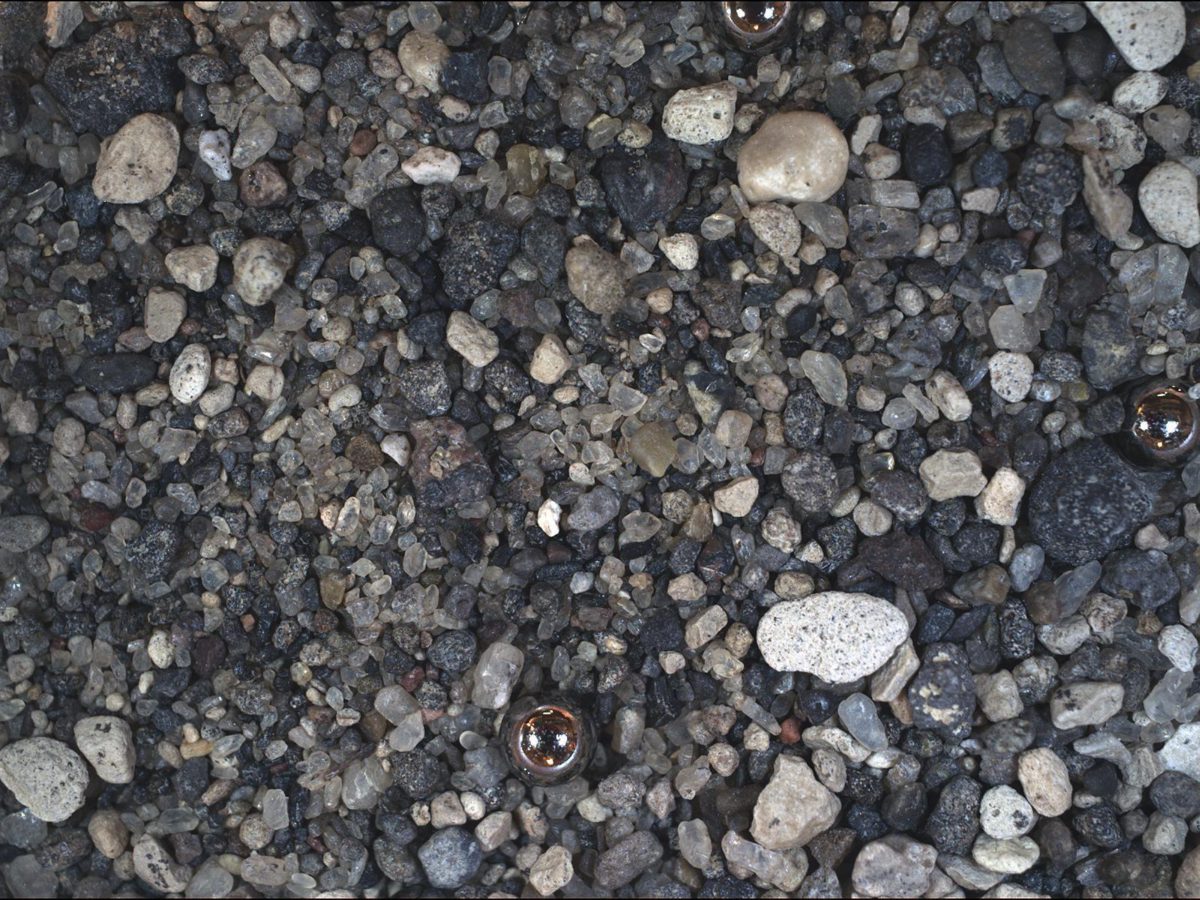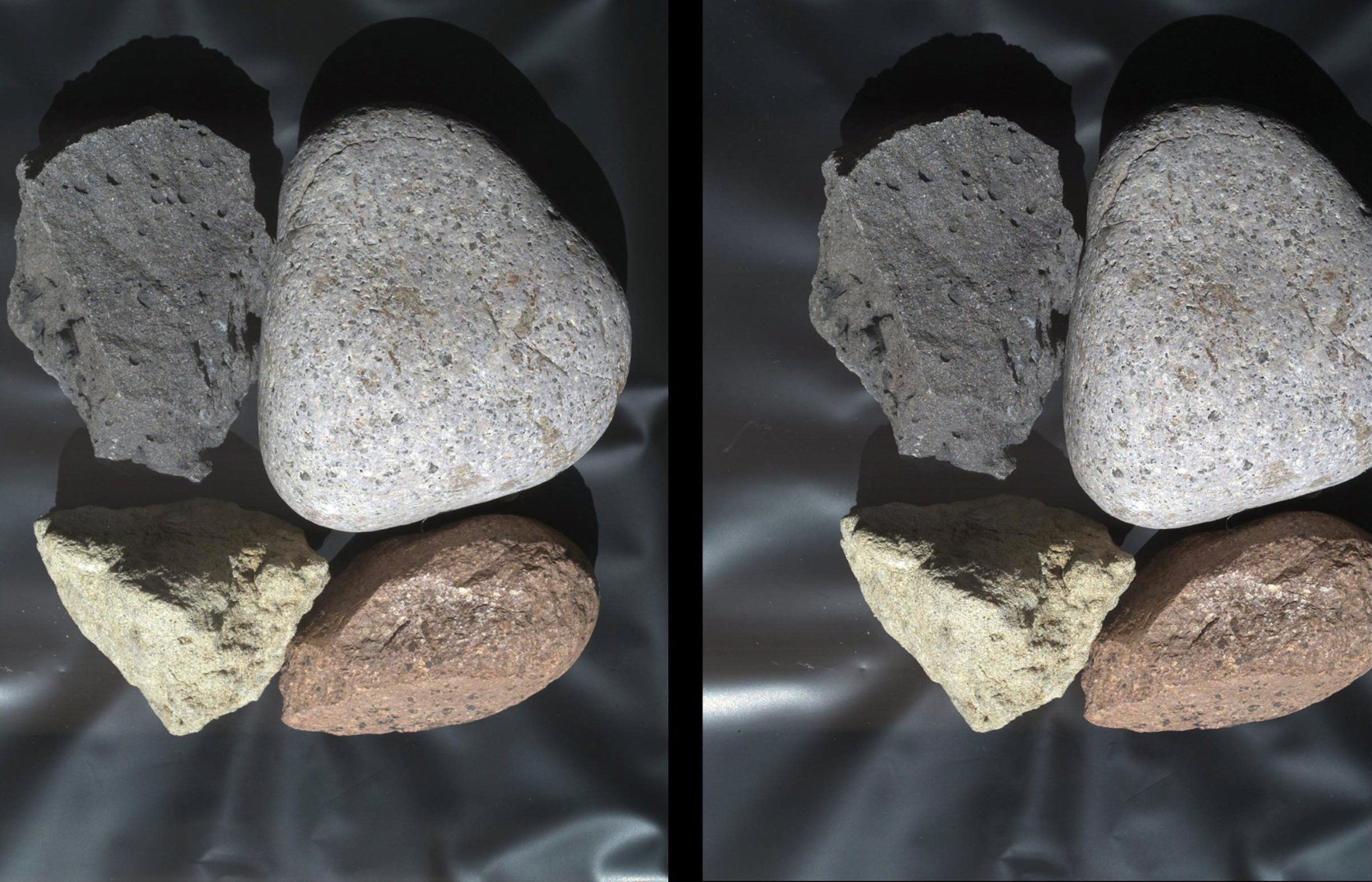Emily Lakdawalla • Nov 16, 2010
I can't wait for MAHLI to land on Mars
EDIT: Thanks to Ken Edgett for setting me straight on my interpretation of the sand.
JPL has just released some test images from the camera that has just been installed on the end of the Curiosity rover's robotic arm. MAHLI, the Mars Hand Lens Imager, is included on Curiosity for the same reason as Spirit and Opportunity's Microscopic Imagers -- to take closeup views of the rocks and soils that it encounters. But there's just no comparing Microscopic Imager and MAHLI images. MAHLI is going to achieve incredible detail in absolutely beautiful color.
Here's one sample image, a closeup on some sand. Each sand grain is revealed to be a rock, many of them containing even tinier grains. As a geologist, I am just drooling over this picture. You can see crystal shapes. With the wonderfully subtle color, a geologist can instantly tell what minerals are visible -- all those translucent ones are plagioclase feldspar. Ken Edgett explained the provenance of this sand to me: "The plag and the pumice grains (big white round grains) and some of the other crystalline grains are all sand-sized tephra from the terminal eruption of Mt. Mazama (now Crater Lake). The plag crystals are relatively angular because they haven't been transported far from where they fell out of the sky, and all that transport was by wind. The majority of rounded, dark gray and black grains are basalt lithic [rock] fragments eroded and originally transported fluvially [by a river] from local/surrounding bedrock. All of the sands in the picture are from the upper surface of a sand dune, so all have also undergone eolian [wind] transport."

MAHLI's just one camera, but it's positioned on the end of a robotic arm, and one of the first things they are teaching (or will teach) the arm to do with it is to take stereo images, the old fashioned way: take one photo, shift position a little bit, take another photo. Here's a crossed-eye stereo pair on some cobbles of different rock. Looking at it in 3D, I can just feel how that rounded gray rhyolitic cobble would heft in my hand, filling it smoothly, ready to be tossed into a puddle with a ker-sploosh. That piece of vesicular lava on its left, on the other hand, would be sharp and rough and oddly lightweight.

Keep checking the CuriosityCam to see them working on Curiosity's "hand" full of science instruments (more officially known as the "turret") this week!
The Time is Now.
As a Planetary Defender, you’re part of our mission to decrease the risk of Earth being hit by an asteroid or comet.
Donate Today

 Explore Worlds
Explore Worlds Find Life
Find Life Defend Earth
Defend Earth

